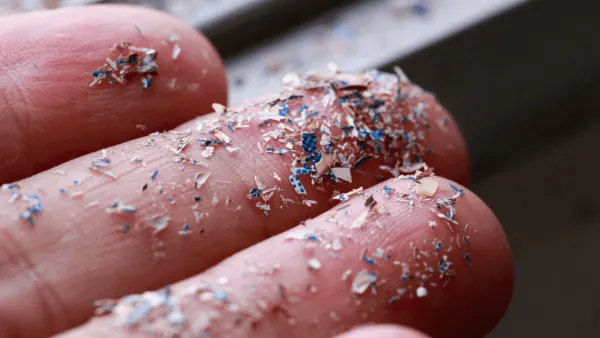Table of contents
Definition
Microplastics are small plastic particles less than 5 millimeters in diameter. They are categorized into two types:
Primary Microplastics: These are intentionally manufactured small plastics, such as microbeads used in cosmetics and personal care products.
- Microbeads in Cosmetics: Found in exfoliating scrubs, facial cleansers, and toothpaste, these tiny beads are added for their abrasive properties.
- Microfibers in Textiles: Microfibers are intentionally manufactured for use in textiles like fleece and synthetic fabrics, known for their softness and durability.
Secondary Microplastics: These result from the breakdown of larger plastic debris through processes like weathering and degradation.
- Plastic Bottles and Bags: Over time, plastic bottles and bags degrade into smaller particles due to UV radiation, physical abrasion, and chemical processes.
- Fishing Nets and Gear: Lost or discarded fishing nets break down into microplastics, contributing significantly to ocean pollution.

Sources
- Cosmetics and Personal Care Products: Microbeads in exfoliants, toothpaste, and other products.
- Face Washes: Many brands add microbeads to their face washes for exfoliation.
- Toothpaste: Microbeads are used to enhance the abrasive action in some toothpaste brands.
- Textiles: Synthetic fibers shed from clothing during washing.
- Synthetic Clothing: Fleece jackets, polyester shirts, and nylon pants release microfibers during washing.
- Laundry: Washing machines without microfiber filters contribute to the release of synthetic fibers into wastewater.
- Industrial Processes: Pellets used in plastic manufacturing.
- Plastic Pellets: Used as raw materials in the plastic industry, these tiny pellets often spill during transport.
- Injection Molding: The production process for various plastic items can result in the release of microplastics.
- Degradation of Larger Plastics: Breakdown of plastic waste in the environment.
- Plastic Packaging: Packaging materials such as cling wrap and bubble wrap break down into microplastics over time.
- Disposable Plastics: Single-use items like straws and cutlery degrade into smaller particles.
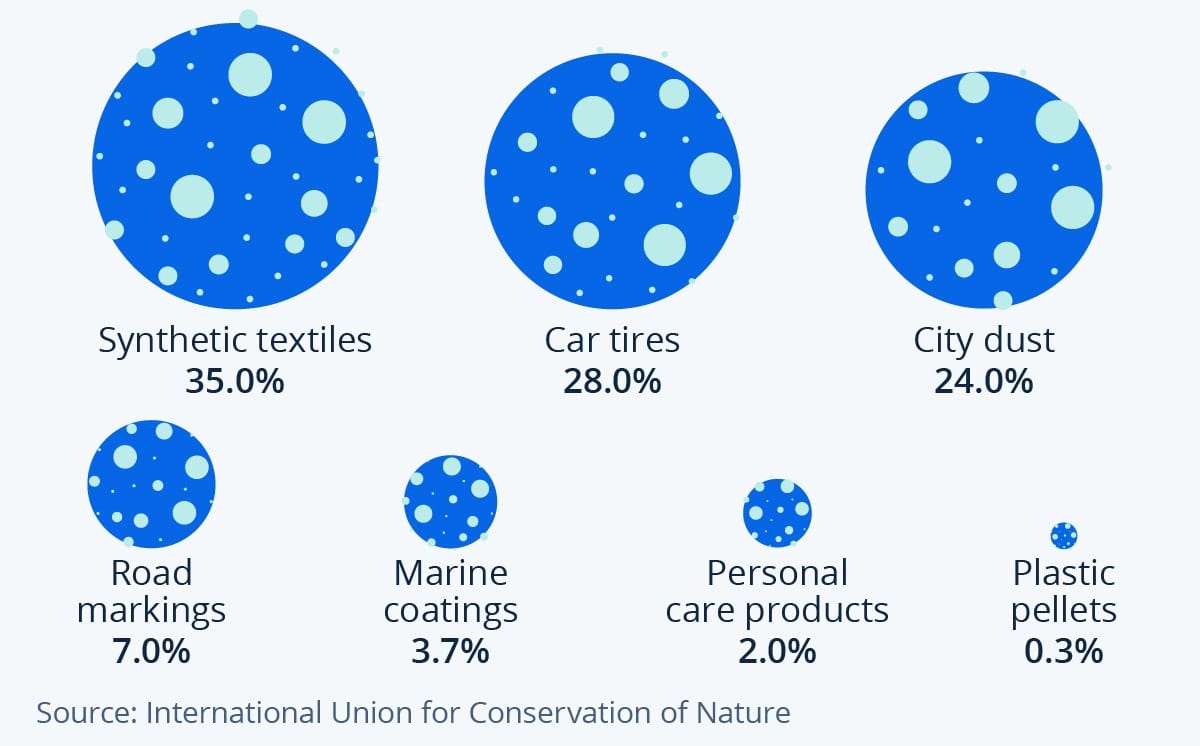

Environmental Impact
- Marine Life: Microplastics are ingested by marine organisms, leading to physical harm, chemical contamination, and disruption of food chains.
- Filter Feeders: Organisms like mussels and oysters can ingest large quantities of microplastics, which can affect their growth and reproductive rates.
- Soil and Freshwater: Microplastics contaminate soil and freshwater systems, affecting terrestrial and aquatic organisms.
- Agriculture: Microplastics can be found in agricultural soils due to the application of sewage sludge and plastic mulching films.
- Human Health: Potential health risks through ingestion, inhalation, and dermal exposure, though the full extent of health impacts is still under research.
- Food and Beverage: Microplastics have been found in products like bottled water, beer, and seafood, posing direct ingestion risks to humans.
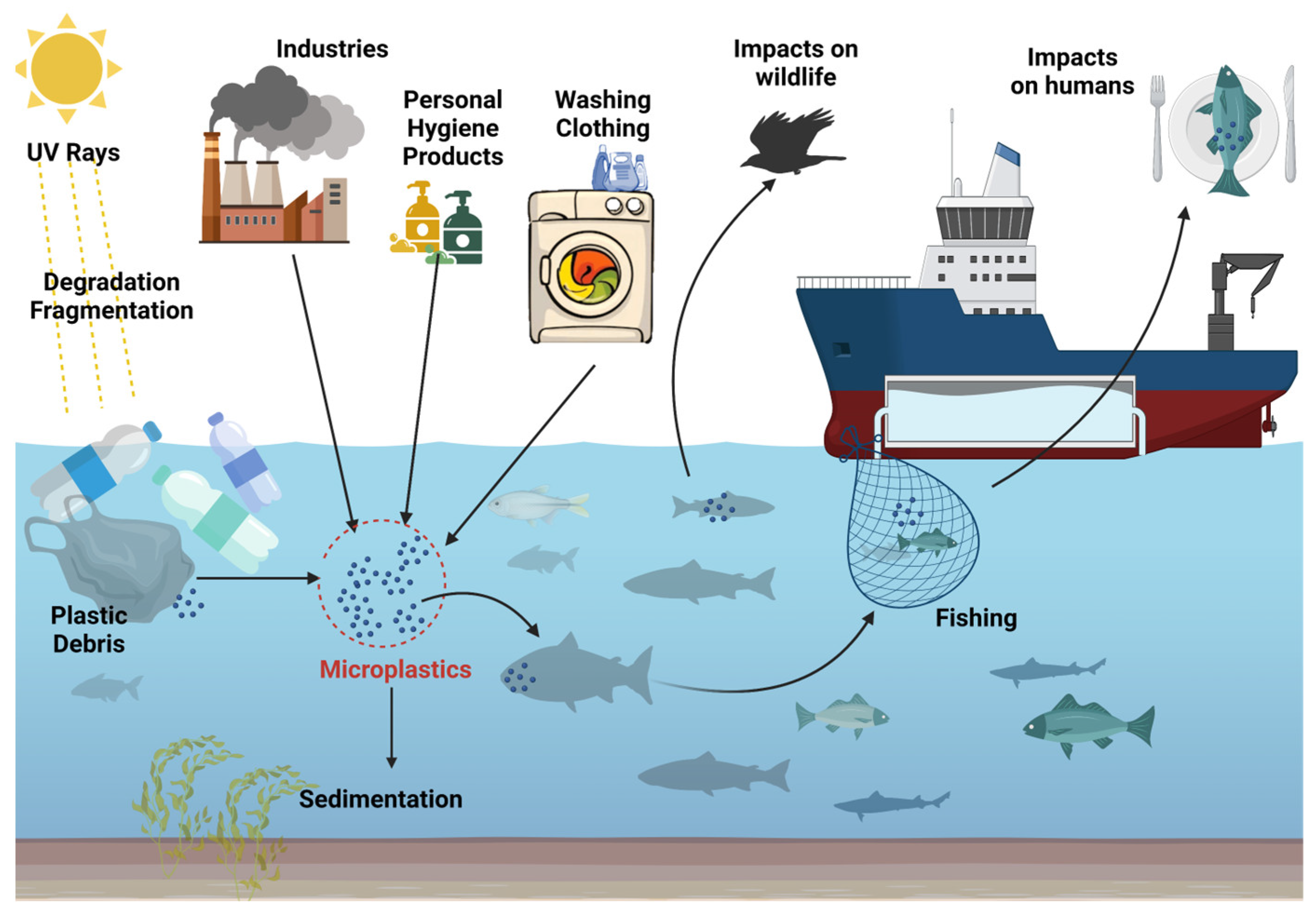

Global Distribution: Microplastics are found in oceans, rivers, lakes, soil, and even in the air. They have been detected in remote locations such as the Arctic and deep ocean trenches, indicating their pervasive nature.
Extreme Locations
- Mount Everest: Microplastics have been found near the summit, likely carried by wind currents and deposited via snow.
- Mariana Trench: The deepest parts of the ocean have shown signs of microplastic contamination.
Case Study: The Great Pacific Garbage Patch
- Location: Between Hawaii and California.
- Size: Estimated to cover 1.6 million square kilometers.
- Composition: Contains a high concentration of microplastics, which form a significant part of the debris.
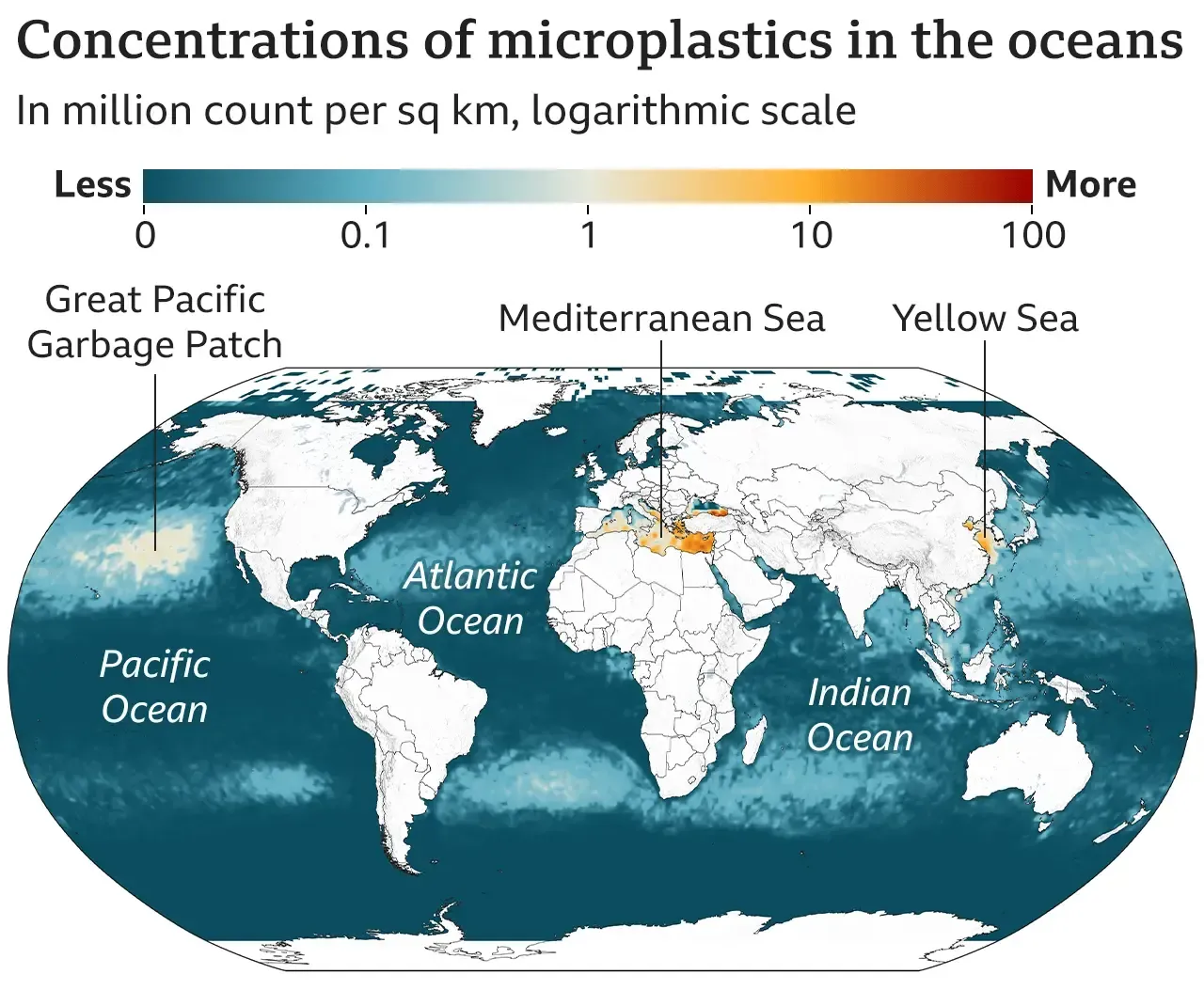
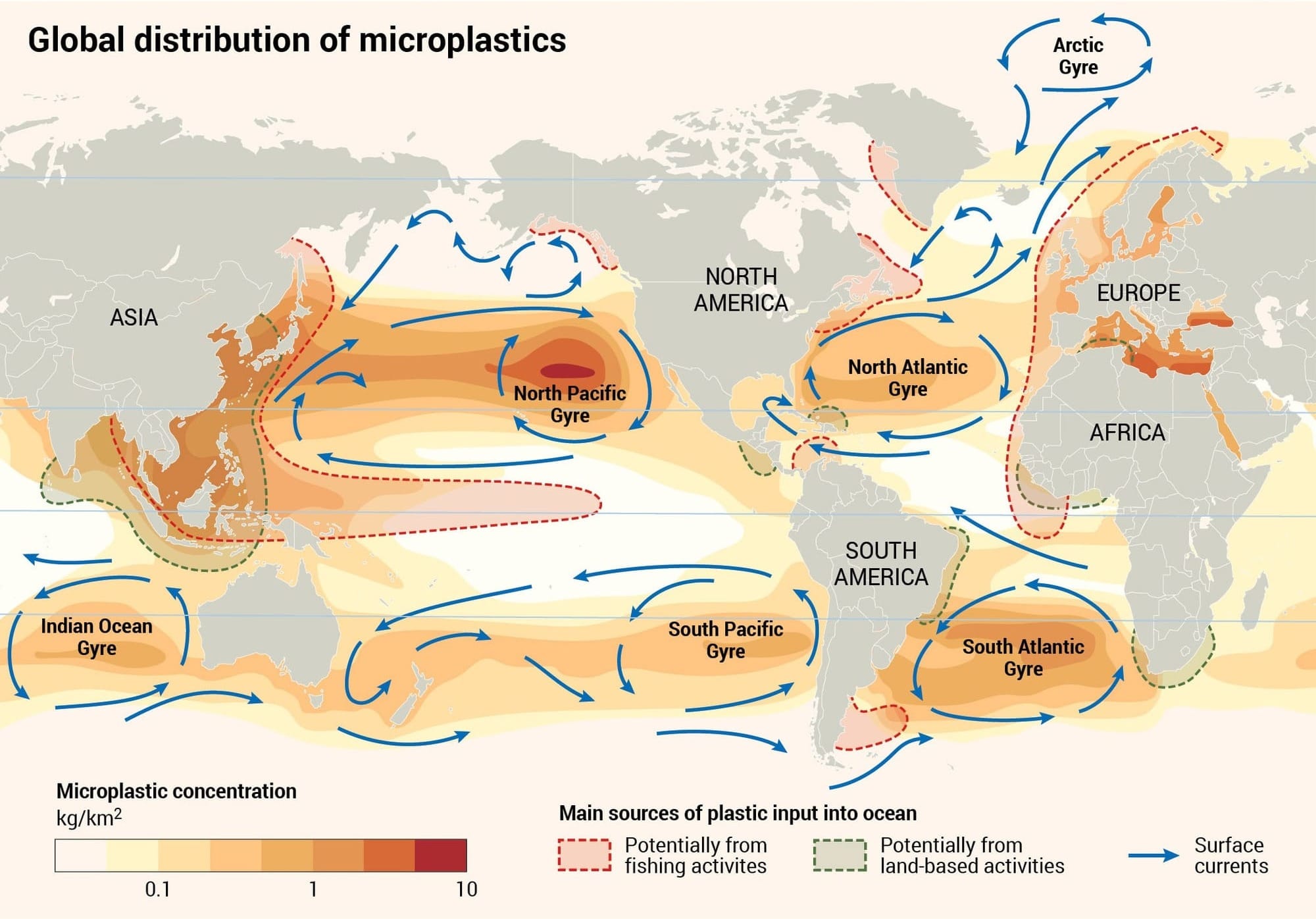
Regulatory Measures
- Bans on Microbeads: Several countries, including the USA, Canada, and the UK, have banned microbeads in cosmetics and personal care products.
- International Agreements: The UN's efforts to develop a legally binding instrument on plastic pollution, including microplastics, by the end of 2024.
- Basel Convention: Updated to include provisions that control the movement of plastic waste between countries to prevent dumping in less regulated regions.
Recent Developments
- 2023 Champions of the Earth Award: Recognized individuals and organizations for innovative solutions to combat plastic pollution, including microplastics.
- Plastic Overshoot Day: Marks the point when plastic waste generation exceeds the world's capacity to manage it. In 2024, the projected date is September 5th globally and April 23rd for India.
- Technological Innovations: Microplastic Sensors: Development of sensors and devices that can detect microplastic concentrations in marine environments in real-time.
- Educational Initiatives: School Programs: Educational programs designed to teach students about the sources of microplastics and the importance of recycling and waste reduction.
Mitigation Strategies
- Research and Innovation: Developing biodegradable alternatives and advanced filtration systems to capture microplastics.
- Researchers at the Indian Institute of Science (IISc) have designed a sustainable hydrogel to remove microplastics from water.
- The material has a unique intertwined polymer network that can bind the contaminants and degrade them using UV light irradiation.
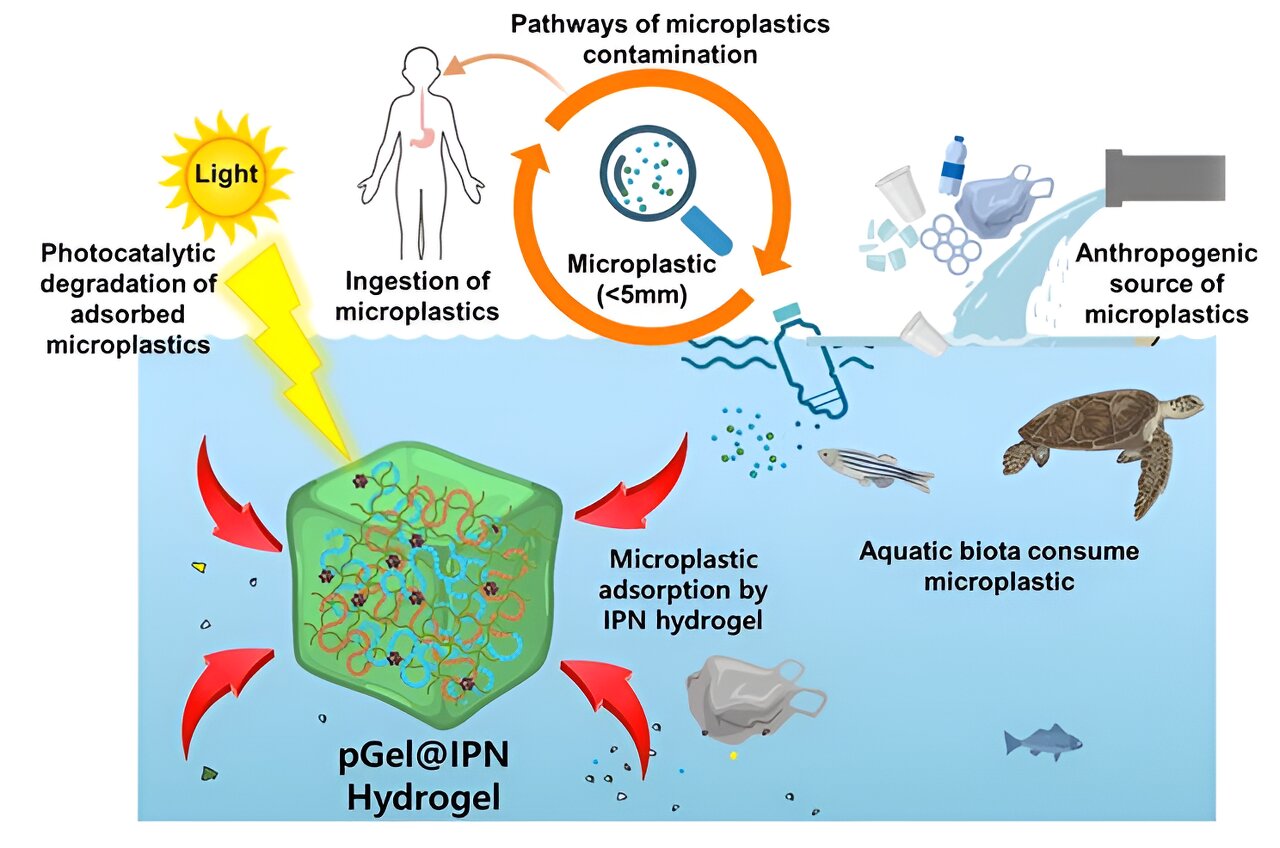
- Improved Waste Management: Enhancing recycling infrastructure and waste treatment capabilities.
- Public Awareness: Educating consumers about the impact of microplastics and promoting sustainable practices.
- Policy Developments: Extended Producer Responsibility (EPR): Policies requiring producers to manage the disposal of plastic products at the end of their life cycle to prevent environmental contamination.
- Advanced Filtration Technologies: Water Treatment: Innovations in water treatment technologies that can capture finer particles, including microplastics, before they enter the aquatic ecosystems.
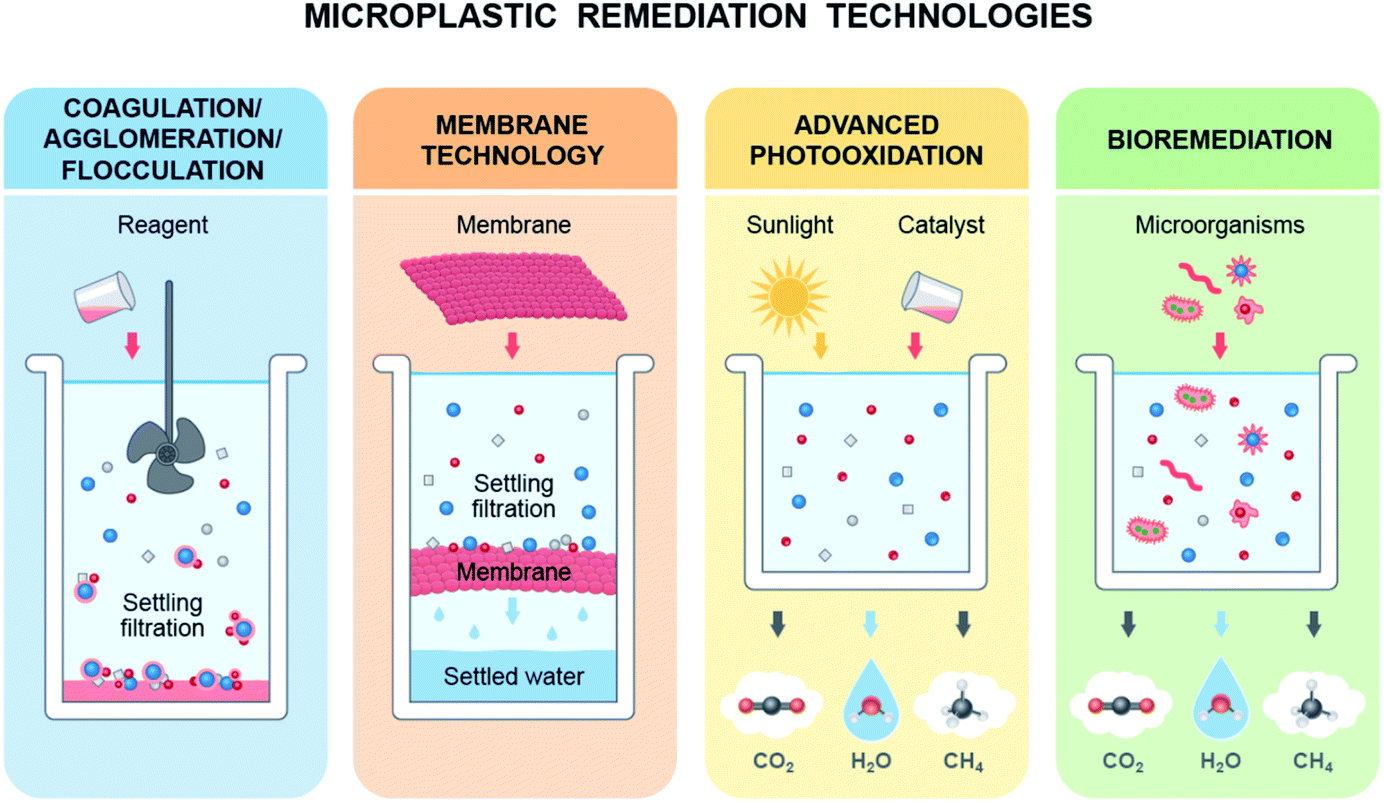
Microplastics pose a significant environmental and health challenge. Addressing this issue requires a multi-faceted approach involving regulation, innovation, and public participation.
The ongoing global efforts, including the development of a plastic treaty, are crucial steps towards mitigating the impact of microplastics.
Previous Post